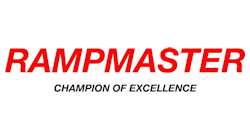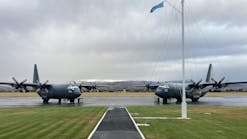ATA SPEC 103
Determining what it does and does not intend to do
By Lindsay M. Hitch, Assistant Editor
April 2001
The "Standard for Jet Fuel Quality Control at Airports," commonly known as ATA 103, sets guidelines for the safe storage and distribution of jet fuel. And although fuel quality and fuel truck maintenance are interrelated, some industry professionals feel that ATA 103 should stick to one or the other.
The preface and introduction of Air Transport
Association (ATA) Spec 103 clearly state that the document is a recommendation
for jet fuel quality and nothing else. It is designed to be a partner
to a regular maintenance program, not a substitute.
The preface states: "This document
is intended to provide guidance to the user covering the safe storage
and distribution of quality jet fuel at airports as currently practiced
in the commercial aviation industry. Due to the wide diversity of airport
fueling operations, this document is not intended to be all inclusive."
The introduction continues: "It is
important to note that additional facilities and testing procedures may
be required at individual airports based on fuel system complexity and
local operating conditions."
THE CONTROVERSY
"What ATA 103 is, is a standard for
jet fuel quality control at airports. And as it stands, that’s just
fine," says Mike Wilkinson, president of General Transervice, manufacturer
of Rampmaster refueling vehicles. "However, ATA 103 then decides
that it’s going to comment on hardware items — how systems work
and how systems shut down."
Wilkinson feels that the document should
not "involve itself in the actual nuts and bolts of fuel trucks and
parts assistance servicers." Wilkinson believes that many of the
maintenance recommendations in ATA 103 are incorrect and incomplete. And
after a heated discussion at January’s Jet Fuel Conference in Miami,
it appears he is not alone.
Eric Boling, interim manager of United Airlines’
Fuel Technical Services group and chairman of the ATA 103 working group,
(who was not in Miami) comments that, "it was originally written
as a guideline and it sort of became the de facto standard in the U.S.
And it was misapplied. It’s still misapplied today; it’s misquoted."
For the most part, the current controversy
with ATA 103 has little to do with the document itself. The problem stems
from the way it is used and perceived in the field.
"Many of the operators out there are
picking up the ATA 103 check sheets and they’re saying, ’Okay,
this is going to be our program,’"says Wilkinson. "It’s
not complete. It isn’t adequate for maintaining fuel vehicles. It
wasn’t intended to be."
Boling affirms that the suggested maintenance
procedures do not make ATA 103 a complete fuel truck maintenance guideline.
The suggestions in the document are there to help maintain clean, dry
fuel, not to maintain the fuel truck and its components.
"When you’re talking about fuel
quality you have to talk about regular intervals of inspection for receiving
product, doing visual and hydrometer tests; so that could be considered
maintenance," explains Walter Chartrand, division manager of Hammonds
Fuel Additives, makers of fuel additives and quality control items. "They
do interrelate. You can say, ’Yes, we want dry, clean fuel,’
and then you take the next step: you help them understand how to get to
that. But prescribing regular and preventive maintenance for the vehicles
themselves may be over-stepping the boundaries originally desired by the
ATA 103 focus group."
"Vehicle inspection and safety are
part of getting fuel into planes safely," says Andy Cebula, vice
president of the National Air Transporta-tion Association (NATA).
FINDING A SOLUTION
The issue now becomes a question of how
closely to follow ATA 103.
Wilkinson repeats, "They do a good
job with the clean, dry fuel standard. That’s not the problem at
all. They should not dabble in the mechanical end."
And Boling freely admits that the document
still needs a lot of work. "There are definitely problems with the
document. I have tried to weed out what didn’t really fit in a fuel
quality or fuel handling safety document. It is not finished. I’d
really like the industry to understand that this document isn’t everything."
Part of the reason ATA 103 has been used
for more than it was intended, is that there is no existing maintenance
guideline. SAE has a committee working on a fuel truck and hydrant cart
spec that will outline what is and is not acceptable for fuel trucks.
NATA has released a new procedures manual
with 13 pages devoted to aircraft fueling vehicles that outlines daily,
weekly, and periodic vehicle and hose checks, as well as a section on
quality control.
The consensus on ATA 103 is that the standards
for clean, dry fuel are effective in conjunction with a complete fuel
truck maintenance program. ATA 103 is not sufficient alone, but it can
be an important part of regular safety and maintenance procedures, say
sources.
DEFINING WHAT ATA 103 IS NOT
United’s Eric Boling did a presentation at last year’s AS3
show in Tampa entitled, "ATA 103, What it is not.’ The main
points were as follows:
• It is not a government document;
• It is not a mandatory industry standard;
• It is not an international standard;
• It is not an aircraft fueling standard;
• It is not a facility or system design
document;
• It is not intended for off-airport
use, such as in refineries;
• It does not talk about inventory;
• It is not a handbook for auditors;
• It does not cover general or corporate
aviation;
• It is not all-inclusive;
• And it is not finished.
At the end of the presentation, Boling remembers
one gentleman jumping up and down who said, "So, what is the damn
thing?" Boling’s response? "Just a recommendation."






